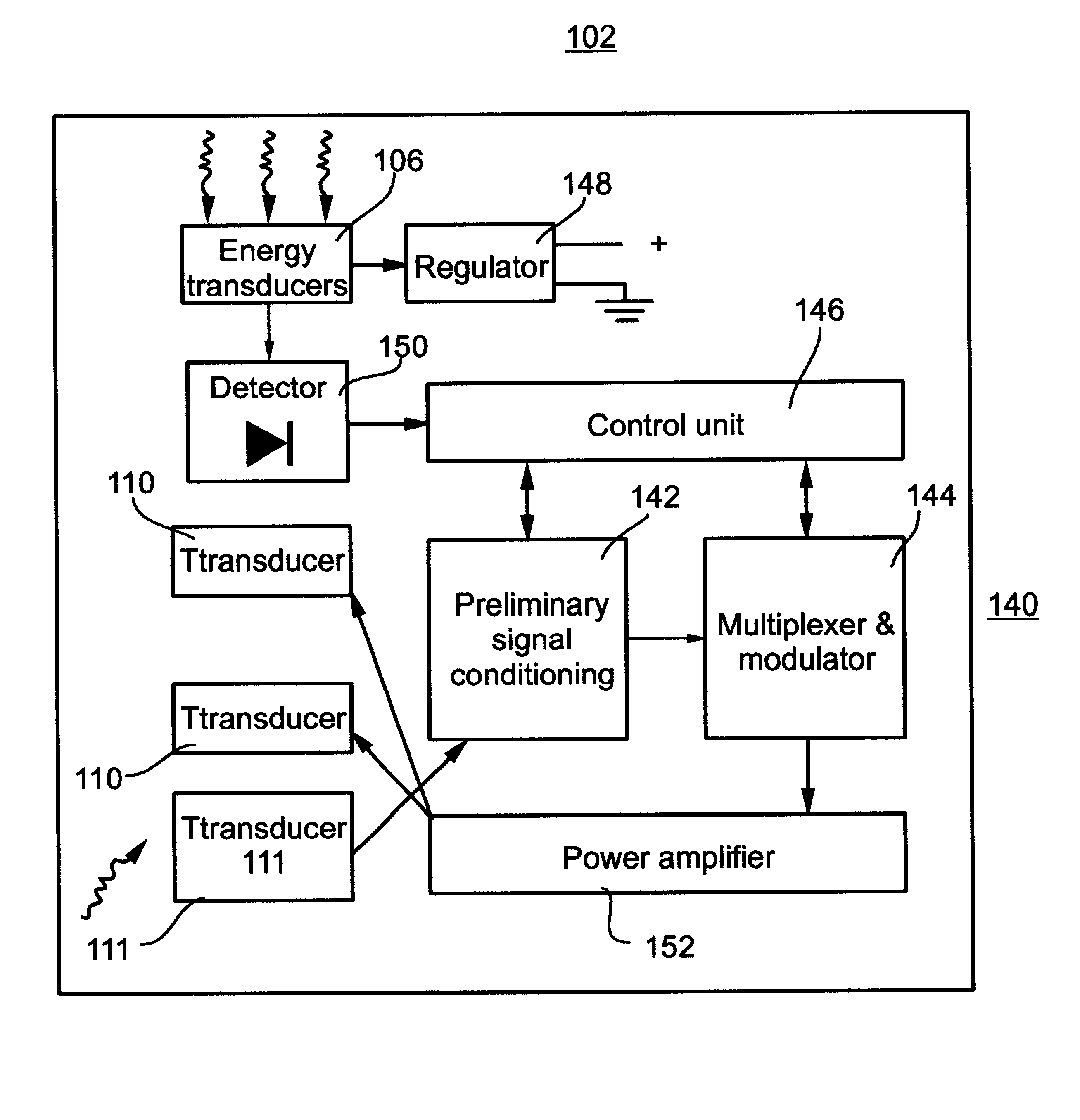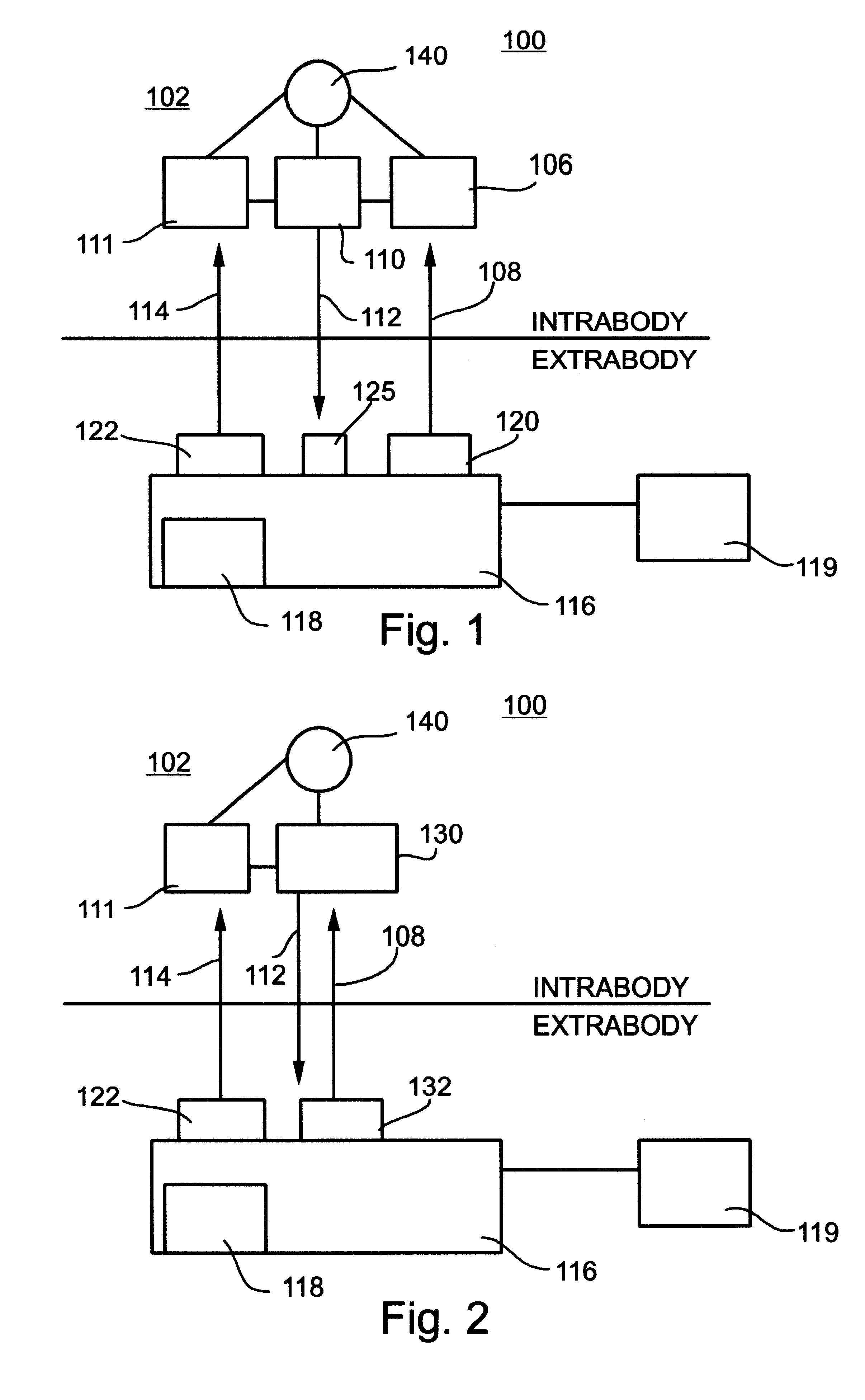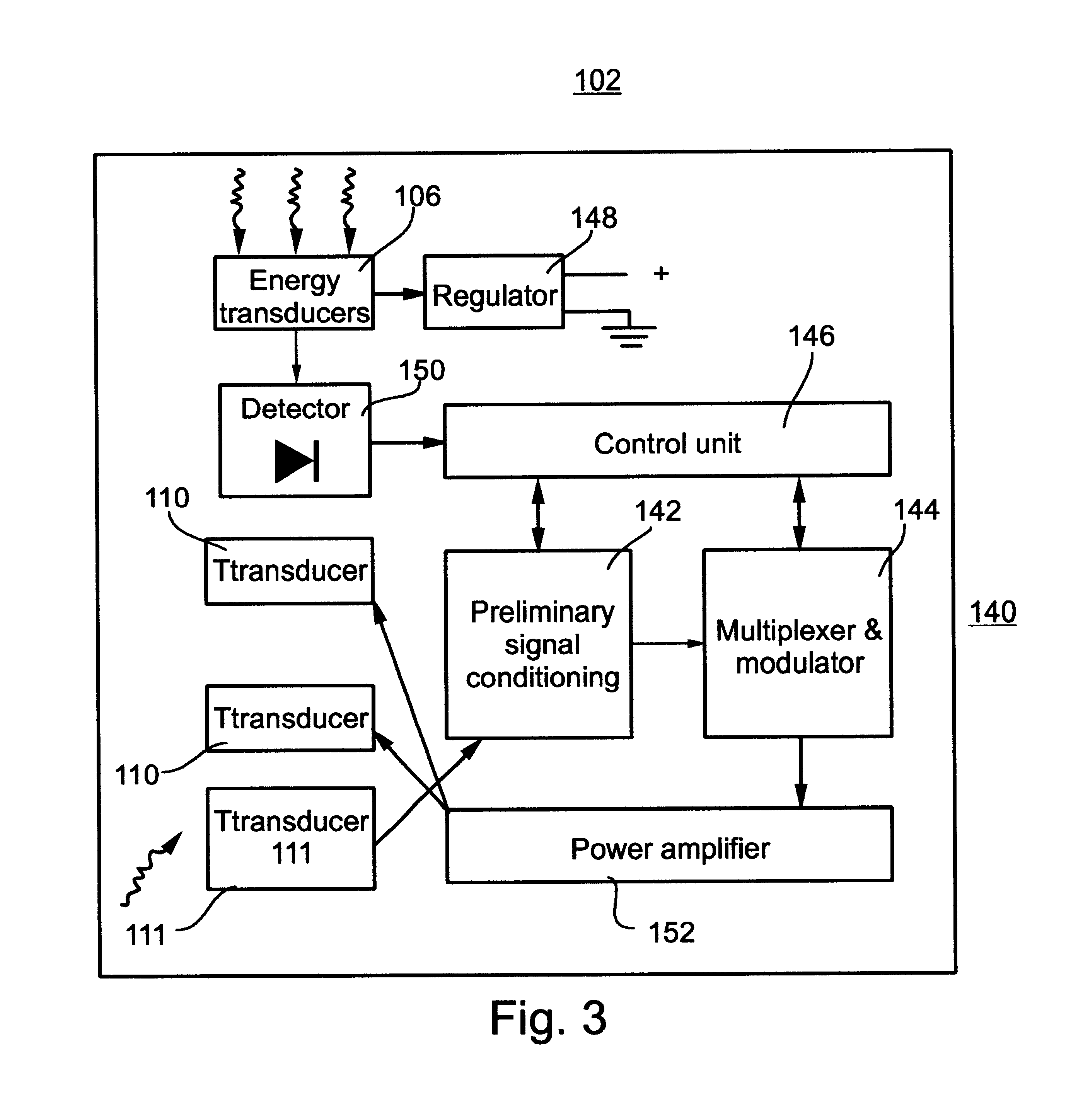Although utilizing the
core biopsy system along with
surgery is currently the method of choice when dealing with breast cancers and various other cancers, such a method suffers from several crucial limitations.
Since there is large difference between the position and shape of the breast during
mammography and
surgery, images taken during
mammography are unusable for stereotactic positioning during the surgical procedure, thus greatly complicating and prolonging the
tumor removal procedure and leading to undue discomfort to the patient.
In addition, serious limitations of the above mentioned procedure result from the implantation of a long wire often present in the breast for many hours at a time while the patient awaits
surgery.
The surgeon must follow this wire into the breast to the located tumor, although ideally, the entry pathway into the breast should be designed independently of the wire, since this implanted wire may not always represent the optimal entrance trajectory.
In addition, the presence of wire(s) extending outside the breast greatly increases the
risk of infection.
A major hurdle facing the surgeon or radiologist in using minimally invasive surgical instruments has been the difficulty in visualizing and positioning such instruments.
The precision of image-based pre-
surgical planning often greatly exceeds the precision of actual surgical execution.
Precise surgical execution has been limited to procedures, such as brain biopsies, in which a suitable stereotactic positioning frame is available.
The restricted applicability of such a frame or device has led many researchers to explore the use of robotic devices to augment a surgeon's ability to perform geometrically precise tasks planned from
computed tomography (CT) or other available image data.
Machines are very precise and untiring and can be equipped with any number of sensory feedback devices.
Although combining the skills of a surgeon with a robotic device can substantially increase the effectiveness and precision of various
surgical procedures, such a robotic
surgical device must have a precisely defined
frame of reference, such as body coordinates, without which it cannot operate with precision.
Although using
extracorporeal referencing devices and methods is advantageous for being
non invasive, such positioning means are limited by the fact that the position of intrabody regions of interest constantly change, either due to deformation of elastic structures (e.g., the breast, organs inside the
abdominal cavity) or due to the progression of the
disease (e.g., intracranial swelling).
Thus, stereotactic methods cannot be used for precise and automated medical procedures, especially those relating to
soft tissue.
This system suffers from several limitations
resultant from the
extracorporeal wire connection of the implanted reference transducer.
The use of such wires prevents the use of this design in intracranial applications, such as, for example,
intracranial surgery.
A further limitation of this design is that wired devices cannot be left inside the body, but instead, have to be removed within a relatively short time following the procedure.
In addition, since discomfort to the patient is wantedly minimized, such wires have to be thin, and as such fragile, and can break during the surgical procedure.
Such a sudden loss of positioning information in the course of a surgical procedure can lead to catastrophic results.
In addition to the limitations imposed by the wiring of the reference transducer, a further
disadvantage of the above mentioned method is that it yields only positions relative to
external reference points provided by the reference transducers which are placed in contact with the patient's
skin.
In these systems and methods, the implants comprise a passive structure which is limited in properties to a specific imaging system.
However, each marker type can only be used with a specific imaging system, which greatly limits the application of such markers.
Furthermore, MRI and CT systems are bulky, intrusive and complicated to operate.
Finally,
ultrasonic imaging systems, for the most part, do not yield independent 3D positions, and suffer from the disadvantages detailed above.
However, it does share most of the disadvantages of other
fiducial marker methods.
In addition, it requires an independent power source, such as a battery, which limits its lifespan and increases the size of such a
transponder.
Thus, a limitation common to all of the above mentioned positioning systems and methods is the lack of precise, telemetric,
spatial localization of intrabody regions provided as information which is
usable as
machine input.
 Login to View More
Login to View More  Login to View More
Login to View More 


